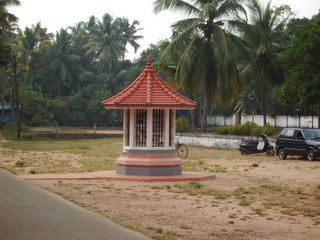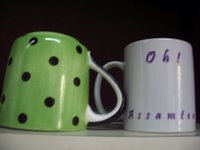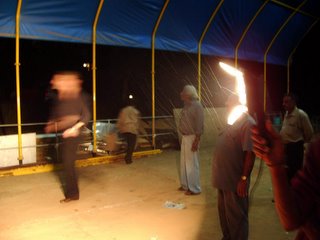For casual readers who randomly landed on this page with no clue about what we are doing and why.
And for those of us who have been deeply involved with the project from it's very inception and know every facet like the back of our collective hands.
Here is the "official" project synopsis. A mythical entity until today.
So now atleast, we know as much as that random guy about what exactly we are doing.

A WINGSAIL PROPELLED OCEAN-GOING CATAMARAN
Introduction and Motivation
The only sustainable types of ocean transport - not dependent on depletable fossil fuel – are those powered by solar energy in one or more of its many forms.
The oldest and most widespread such transport are sailing craft, which use the power in the wind to propel them to any intended destination, irrespective of the direction of the actual wind.
An understanding of the physics involved in this ability acquired over centuries of experimenting, trial and error became possible only a hundred years ago, at exactly the time when human heavier-than-air flight was achieved. And the apparent coincidence was simply because of the recognition of a new and counterintuitive force called lift, generated perpendicular to a fluid flow, and precisely what was required to hold an airplane up in the air by virtue of the forward motion of its wing. It then did not take long to appreciate that it was the same force that made sailing to windward possible, and the English aeronautical genius, Lanchester, propounded a theorem in 1907 which quantified the performance of all sailing vessels in aeronautical terms, and that is still valid today.
An immediate consequence of the above was that the best sail one can have is a proper, rigid, 3-dimensional airfoil instead of the usual 2-dimensional fabric sail.
One may ask, why then do expensive yachts continue to be built in the old way? There are several reasons, the main ones being ignorance, conservatism, unfamiliarity with airfoil theory and practice, and a big vested interest in the yacht industry, which profits in millions by selling expensive equipment to do things in the old difficult way.
THE PROJECT.
Control principles and practice:
The yacht described hereunder, and illustrated in the accompanying drawings, is an attempt using all the knowledge and technology available in this space age, to produce a clean, green, safe, efficient and effortlessly controllable ocean going machine. Solar panels and wind generators provide electricity to the batteries that power electric motors for easy maneuvering in harbour, with joysticks that permit independent ahead/astern drive in each hull, and similarly independent electric control of the two rudders. Radio control from anywhere on deck, or even from the quay is an option.
The real drive at sea is provided by a vertical, symmetric airfoil, which also can be effortlessly controlled, manually, electro-mechanically, or remotely by radio, as convenient. The operational equivalent of the strenuous and often dangerous exercise of quickly shortening sail ahead of an approaching squall, is now a few seconds of button pressing for controlled reduction of drive. In more severe conditions, the drive can be instantly neutralised by the push of a PANIC button. This reduces the windage of the wingsail to less than that of a bare mast and rigging in a conventional sailing yacht, providing the desired safety in strorm conditions. Drive can, of course, be restored at any instant as desired.
All composite construction.
The lightness of an ocean-going craft makes for both safety and speed, and so keeping the weight to a minimum has been a guiding principle in our choice of materials and construction practices.
The 15 metre long fibreglass hulls designed by Tate (UK), and built by Praga Marine have been used before in many backwater applications to carry a large number of passengers, and displacing up to 22 tons when fully loaded. As the goal in the present exercise was a displacement of one third of that value (~7tons), one had to resort to high tech materials. They were;
Aluminium honeycomb sandwich two inches thick. All the decks are made of this material which weighs only about 8 kilograms/square meter.
Beams of length 8.2meterrs of carbon fibre. The 15 metre long central support for the wing section is also of carbon fibre.
Metal-foam sandwich.
After considerable experimentation we found that a sandwich made of half inch foam between half millimeter aluminium sheets could be shaped into curves in a wooden mould, and came out to be very strong at only 6.8kgms/square metre. This then provided just what was needed both for the canopy as well as the wing sections.
Other unusual materials used below decks for bunks, seats etc., were
Sintex plastic board sold for bathroom doors, and
Aluminium mesh of heavy gauge for the bunks to support the mattresses.
OTHER FEATURES
Of the four bulkheads in each hull, the first and last were made watertight so each hull has three watertight compartments. In terms of a collision at sea, the end compartments are the most vulnerable, but the loss of one or two of these will not affect the overall buoyancy and safety of the craft. Each one of these six volumes has an electric bilge pump installed, as also a float switch which will instantly alert the bridge by beeper as well as a light if any water gets in.
SAFETY EQUIPMENT
A lifebuoy with a light, lifelines, life jackets, flares, a safety harness to move around the deck in severe conditions, fog horn, fire extinguishers, a watermaker, and a generator working on LPG. The entire deck area is surrounded by stainless steer railings.
NAVIGATION EQUIPMENT
A chart plotter with GPS, two other GPS receivers for redundancy, two depth finders one with an external and one with an in-hull transducer, VHF radio, Radar, Sextant, TV cameras looking both ahead and astern and one on the mast head looking down, and a lightning arrester. Also an INMARSAT communication system.
SUPPORT FOR THE PROJECT
Generous support and assistance was provided, by DRDO, VSSC, ISRO, NAL, BEL, RRI, RAJ HAMSA,
AKZO-NOBEL and The Indian Navy, among others.



















